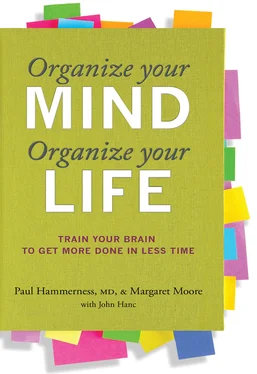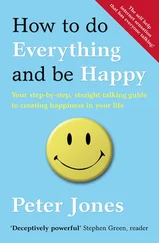A NEW APPROACH TO NEUROSCIENCE AND MENTAL HEALTH?
A provocative new way of thinking about neuroscience and mental health comes from the folks at the National Institute of Mental Health, who suggest that many cognitive, emotional and behavioral problems—e.g., ADHD, depression, anxiety disorders—can be thought of as problems in the brain’s circuitry, problems that may have existed and been ignored for years. If we can identify them early, we may be able to intervene in very specific ways to prevent and even reverse the problem; much the way a physician will prescribe a low-fat diet and exercise to a patient with slightly elevated cholesterol which, if left on its own, can lead to very serious heart and blood vessel problems or failure.
As neuroscience shows us the intricate details of these circuits, we see the brain’s checks and balances in action. One example of particular importance at the “macro” circuit level can be seen in the brain’s balance of emotions and cognitions. Remember the brain-imaging study that we mentioned in the introduction, the one where subjects viewed pleasant, unpleasant and neutral pictures while attempting to keep in check their emotional reactions? Through the use of imaging techniques, researchers at the University of Colorado were able to observe the “thinking”-brain regions of these subjects (including areas called the prefrontal cortex and the anterior cingulate cortex) actually regulating the emotion-generating regions. If you can manage your emotions, harmonize and focus the various “thinking” parts of your brain, then a whole new world opens up before you. You’ve got a more organized, less stressful, more productive and, in many ways, more rewarding life—not to mention one where you can always find your car keys.
Yes, this is the good news about your brain. While you may be disorganized, your brain isn’t. Inherently, it’s a jewel of organization and structure, of different components working harmoniously together. And here’s the exciting part—the features in this magnificent self-regulation system that come “pre-loaded” in every functioning human mind can be accessed, initialized and used to become better organized and to feel more on top of things.
You just have to know how to do it.
That is the purpose of this book: to help you do for yourself what I did for Jill; to help you understand just what your brain can do to help maintain order and to keep you focused and then to show you how you can do that for yourself. We’ll talk big picture and sharp-focus details. We’ll talk about day-to-day details, but we’ll also talk about life in general. We’ll talk descriptive and prescriptive. We’ll talk “neuroscience”—the science of cognition, the science of ADHD and the science of a properly functioning brain. And we’ll talk “solution”—how you can learn to harness those amazing organizational abilities embedded in our minds. My colleague and coauthor Margaret Moore will also employ an exciting new discipline, the science of change, to help you make these modifications in your life (more about that in the next chapter).
What we will not do, sorry to say, is eliminate distractions. The bad news on that front is that they’re here to stay. And some of the things that distract us are very odd indeed.
The Brain Bone’s Connected to the Ham Bone…
The issue of distracted driving has been in the news over the past few years. First cell phones and now texting have been shown to be contributing factors in many incidents of distracted or inattentive driving. But you can’t just blame technology here. The Record, a newspaper covering the Waterloo region of Ontario, Canada, analyzed more than four hundred local highway reports of distracted-driving collisions to see what was causing drivers to take their eyes off the road. Here’s what the reporters on The Record found:
About 20 percent of drivers were distracted by something inside their vehicle—fiddling with the radio or talking to other passengers.
One driver told police he was driving with his knees while trying to roll up his window. He slid onto the shoulder and smashed into the concrete median.
A passenger told police she was having a heated argument with her boyfriend, the driver. Neither noticed their car had slid onto the shoulder until she grabbed the wheel, causing them to lose control.
Six drivers were distracted by food. One driver admitted she was cleaning melted candy off her steering wheel when she lost control of her car. Another started choking on coffee, and another let go of the steering wheel after spilling hot chocolate.
But in almost half the cases, drivers were distracted by something outside the vehicle, most often other drivers, accidents, construction crews or road signs.
One driver became so transfixed by pigs being transported in the next lane that she crashed her car into the truck.
“As I was in the turn, I looked off to my right at a transport truck in the right-hand lane,” she told police in her driver statement. “It looked like he was transporting pigs, so I focused on the animals. As I did, I started to head toward the truck… I remember slamming on the brakes. Everything went white and then I heard the crash.”
Disclaimer to readers of this book: If you are someone who becomes transfixed by the sight of farm animals in trucks while driving, nothing we can say will help you.
THE RULES OF ORDER
Through years of working with patients, through the growing body of clinical literature and through insights gleaned from advances in neurosciences, we have learned much about what ADHD patients and the general public struggle with. From that, we can better understand what we should do in order to stop being forgetful, start getting focused and stop allowing distractions and a lack of focus to mess up our lives. In Organize Your Mind, Organize Your Life we boil down many essential “brain functions” to six principles—what we call the Rules of Order. Consider these “brain skills” or abilities that you can develop and master. In the chapters ahead, Coach Meg and I explain these Rules of Order and then show you how to learn these skills to give yourself more focus and your life greater order. We will start with three “simple” principles and build upon these more complex organizational abilities and strategies.
1. Tame the Frenzy: Before we can engage the mind, we must control, or at least have a handle on, the emotions. It’s hard to be thoughtful or efficient when you’re irritated, frustrated and distraught. First, it’s necessary to calm down and stabilize the frustrations, anger or disappointments that we may be feeling at that particular moment.
A wonderful example of this quality comes from, of all places, a well-known cable television program. There is no one better at taming frenzy than Cesar Millan from Dog Whisperer with Cesar Millan. And just as Cesar teaches dogs and owners how to more happily coexist, so, too, can he teach us something about the necessary approach to thinking and organization. When he deals with dogs (and their often-distraught owners), Cesar’s tenet is to be “calm, yet assertive.” In order to have a healthy, responsive canine, you have to find your “calm-assertive” energy. As described on his website (www.cesarsway.com), this is “the energy you project to show your dog you are the calm and assertive pack leader.” Assertive, he adds, “does not mean angry or aggressive. Calm-assertive means always compassionate, but quietly in control.”
Quietly in control. That’s a nice phrase. How does this apply to your life and to your abilities to better organize yourself? Here’s how: before you attack that mound of work piled up on your desk or computer inbox, you can’t be angry over the fact that it’s there, annoyed with your boss, fearful of what’s ahead or full of self-criticism for letting it get this way again. First, you need to get yourself together, get ready to mobilize your cognitive resources—then you can tame the wild pile, like Cesar tames the unruly canine. Organized, efficient people are able to acknowledge their emotions. But unlike many who let their emotions get the better of them, these folks have the ability to put the frustrations and anger aside, almost literally, and get focused on work. The sooner the emotional frenzy welling within you is tamed, the sooner the work is done and the better you feel.
Читать дальше

![Джон Харгрейв - Mind Hacking [How to Change Your Mind for Good in 21 Days]](/books/404192/dzhon-hargrejv-mind-hacking-how-to-change-your-min-thumb.webp)










